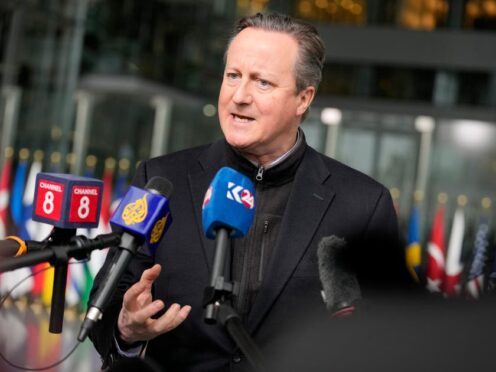The West needs to “win the argument for Nato again” as Europe faces the same situation as in 1938, David Cameron has said.
In a speech marking 75 since the creation of Nato, the Foreign Secretary likened the current situation with Russia to the one Britain and France faced at the 1938 Munich conference with Nazi Germany.
He said: “What we face today is as simple as then. We have a tyrant in Europe who is trying to redraw borders by force, and there are two choices. You can appease that approach or you can confront that approach.”
His comments echo those made by Defence Secretary Grant Shapps, who said in January the UK was facing a “pre-war world”, while General Patrick Sanders, the Chief of the General Staff, has previously referred to a “1937 moment”.
In his speech at an event in Brussels hosted by the Royal United Services Institute, Lord Cameron said Nato needed to demonstrate its “relevance” to younger people who had not grown up with the threat of the Cold War.
He said: “I think we have to win the argument for Nato all over again with a new generation, a generation that can see, yes, look at the threat that Ukraine has faced from Russia, but I think we need to go back to a more foundational argument, which is this.
“Fundamentally, the greatness of Nato is it allows countries to choose their own future.”
He added: “I think that is the sort of incredibly strong, values-based argument that a younger generation can understand and see.”
Earlier in the day, Lord Cameron had urged allies at a meeting of Nato foreign ministers to “step up and spend more on defence” in the face of Russian aggression.
It has been 10 years since Nato countries agreed to spend 2% of GDP on defence, which 18 of the alliance’s 32 members are expected to achieve in 2024, up from just three in 2014.
